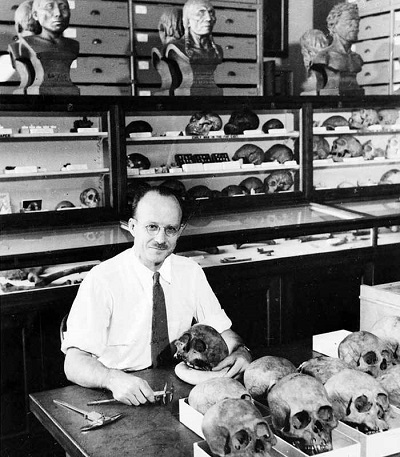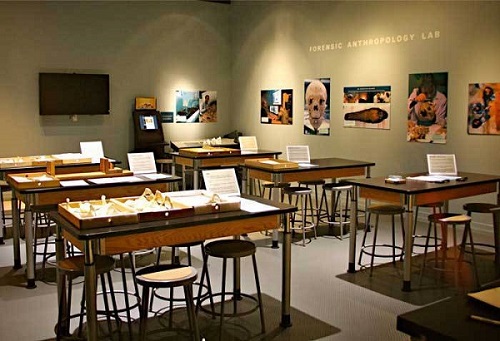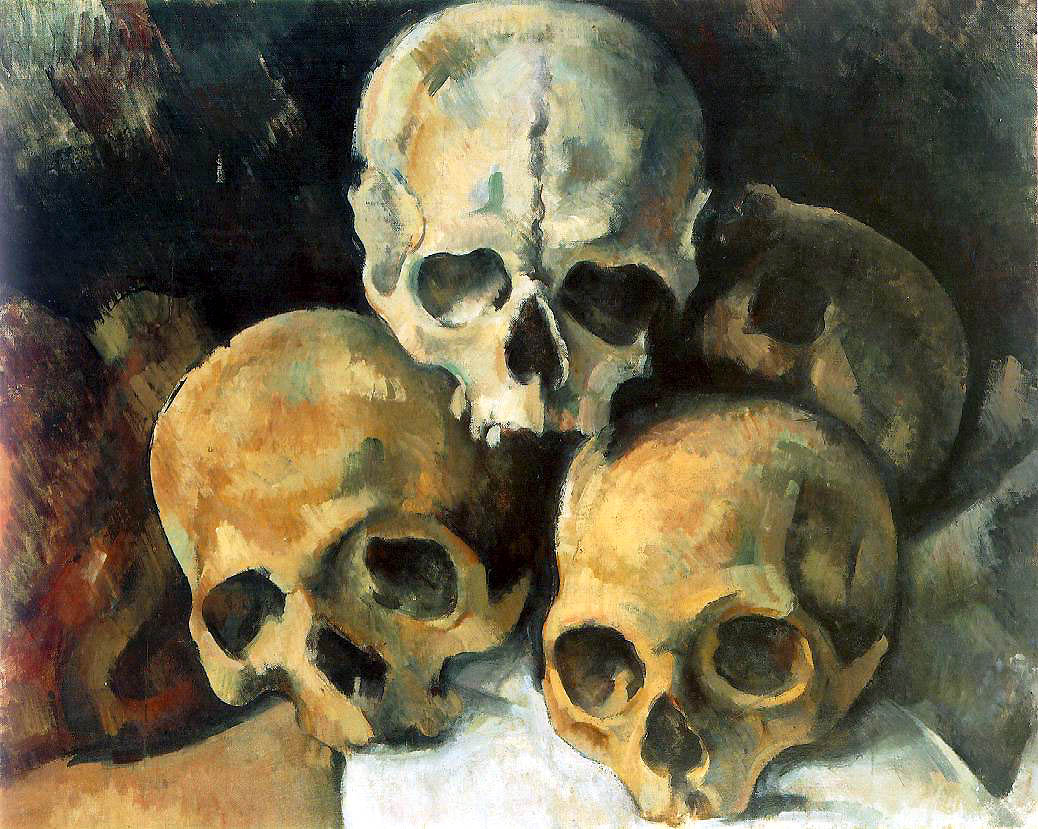Dry Bones: Uncovering the Secrets of the Dead
Modern-day tomb raiders look more to discover diseases linked to ancient deaths than the Holy Grail.
Sometimes, our appreciation for what it takes to do something extraordinary comes from fiction: Indiana Jones fighting the Nazis introduces us to a dramatic depiction of the field of archeology. A musty, dusty field that is key to uncovering secrets from history. And changing history: to keep up with the times, the next Indy may be a woman!
Because, through these stories, we hope to see ourselves in these roles. The first time I saw the movie series, Lara Croft: Tomb Raider, I was excited to see a woman playing the lead as an adventurous grave raider and treasure hunter. The videogame-turned-movie was first portrayed on the big screen by Angelina Jolie and later remade in 2018. Her strength when evading danger and solving puzzles in ancient tombs developed Croft as a role model, and her sleuthing work as a dream career.
I wondered how ancient bones, like those in Tomb Raider, were found and identified as the great rulers of the world or simply ordinary people. I was also curious to discover how the identification process changed throughout human history, and the secrets that these old bodies hold.
Well, it turns out that forensic anthropologists have dedicated their expertise to this field of research devoted to sleuthing ancient bones and bodies.
What is forensic anthropology?
Of course, Indiana Jones was an archeologist in search of lost treasures at the brink of World War II.
But a modern-day Indiana Jones is likely to be as much disease detective or crime-scene investigator as treasure hunter. The field of archeology is actually a subfield of anthropology, or the study of human societies and cultures and their development.
And although we know mostly about forensics from popular television series like “CSI,” it’s actually an age-old field concerned with looking for clues to solve crimes.
So how does forensic anthropology combine these two fields, and how does combining them impact modern discoveries and crucial evidence in the historical and criminal field? How can the study of bones determine the context in which a person died, their time of death, and who they are?
The roots of this field can be traced to the 19th century, but the field of forensic anthropology advanced and was only popularized in the late 1950s. Clyde Snow, one of the most influential forensic trailblazers, brought this practice to the U.S. in the ‘70s through his skeletal studies of John F. Kennedy and King Tut. Snow was infamous for his determination in identifying any bones and identities that stumped others in the forensics field. This same determination and passion for his work has allowed for increased development in forensic anthropology with technology and scientific vectors such as DNA analysis that can all be accredited to Snow’s beginnings.

Forensic anthropology is centered around the “big four” outcomes that can be measured in order to identify someone’s remains. These components are: age, height/bone structure, gender, and ethnicity. The shape and size of bones and teeth give researchers an indication of the body’s stage of life at death. The bones along the spine and pelvic area will reveal a person’s age.
In a crime scene, or when combing through the remnants of the human past, teams of researchers, police, crime-scene investigators, law enforcement, physicians, archeologists and anthropologists use the techniques of forensic anthropology. The team may be working closely to identify victims from plane crashes, for example, or when trying to identify the bones in super old graves to discover details about peoples and cultures that would otherwise be gone forever.

Murder, She Wrote
Cause of death is the most common puzzle these teams may be trying to unravel.
Scientists must pursue physical and biological clues to learn under what conditions a subject may have died, whether that be plague, war, murder, or food poisoning. Disease, diet, and living conditions are also part of the equation and are crucial in investigations to understand past events, epidemics and crimes. Often, researchers and investigators are looking to uncover climate or environmental changes to find out about how this person or community lived.

Of course, law enforcement and criminal justice are still where much of the action is.
Forensic anthropology has been an important tool when determining how someone may have been killed and ultimately who killed them. Forensic techniques may indicate a violent death or perhaps a fatal accident. Fractures bones, deep cuts, and bullet wounds can all signify a criminal case and the cause of death. Studying the dental records of an unknown body can become vital clues in the identification of a body, a practice used extensively in the aftermath of the terrorist attacks of 9/11. Finally, the use of DNA evidence is the most typical, yet effective technique, testing blood, tissue, hair, and saliva. DNA evidence has been a potent aid in determining everything from people who are victims of war crimes in Syria, to identifying elephant and rhino poachers.
Cool modeling tools put the STEAM into anthropology
But the clues are not all what you’d find at police taped-off crime scenes. Through computer modeling to reproduce facial structures, casting of models, and radiographic techniques, these scientists can identify the cause of death through technology, by seemingly bringing the dead back to life.
As in film, there are many ways that fiction and science fiction can inspire someone aspiring to this career field. The hero in the Edge of Yesterday book series, Charley Morton’s incorporation of forensic anthropology into her vast adventures while time traveling allows her to uncover the secrets of the dead, and create new knowledge for the living. As she learns the skills to evaluate DNA evidence, use computer modeling (and Leonardo da Vinci’s anatomy lessons!) for facial reconstruction, Charley has been gaining the superpowers to integrate this ability into her time-travel adventures. I see her story as a new way to inspire young readers to pursue their passions for learning and discovering what excites them.
Want to Learn More?
- Clyde Snow. "The Forensics Library" , 30 Nov, -0001. http://aboutforensics.co.uk/clyde-snow/. Accessed on 14 Sep, 2019.
- Radek Gadek. "Forensic Anthropologist Career, Salary and Training Information" , 31 Jan, 2019. https://criminaljusticeonlineblog.com/forensic-anthropologist-career/. Accessed on 14 Sep, 2019.
- How to Become a Crime Scene Investigator. "Forensic Anthropologist Job Description" , 30 Nov, -0001. http://www.crimesceneinvestigatoredu.org/forensic-anthropologist/. Accessed on 14 Sep, 2019.
- Smithsonian National Museum of Natural History. "Forensic Anthropology – Bone Whispering" , 30 Nov, -0001. https://naturalhistory.si.edu/education/teaching-resources/social-studies/forensic-anthropology-bone-whispering. Accessed on 14 Sep, 2019.
- Smithsonian National Museum of Natural History. "Forensic Anthropology" , 30 Nov, -0001. https://naturalhistory.si.edu/education/teaching-resources/social-studies/forensic-anthropology. Accessed on 14 Sep, 2019.
- TeenLife. "Forensic Anthropology and Bioarchaeology at UMass Amhers" , 30 Nov, -0001. https://www.teenlife.com/summer-program/bones-do-tell-tales-forensic-anthropology-and-bioarchaeology-umass-amherst/. Accessed on 14 Sep, 2019.
- Lara Croft Wiki. "Lara Croft" , 30 Nov, -0001. https://tombraider.fandom.com/wiki/Lara_Croft. Accessed on 14 Sep, 2019.
- James Owen. "5 Surprising Facts About Otzi the Iceman" National Geographic, 18 Oct, 2013. https://www.nationalgeographic.com/news/2013/10/131016-otzi-ice-man-mummy-five-facts/. Accessed on 14 Sep, 2019.
- Artem Cheprasov. "What is Forensic Anthropology? - Definition & Famous Cases" Study.com, 30 Nov, -0001. https://study.com/academy/lesson/what-is-forensic-anthropology-definition-famous-cases.html. Accessed on 14 Sep, 2019.
